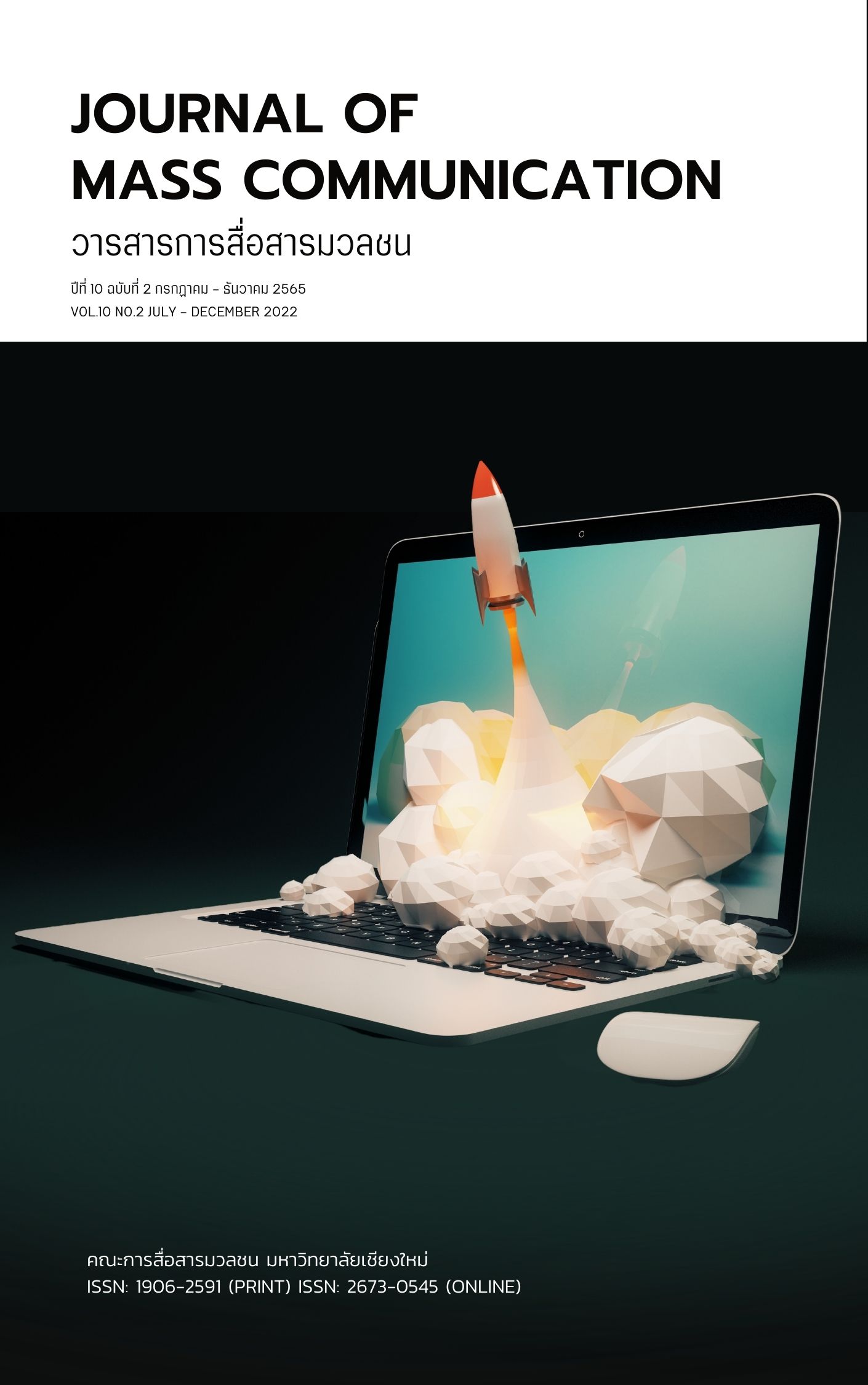Developing Knowledge Dissemination of Research Outputs: A Collaborative Learning Management Model Supported by Communication Innovations.
Main Article Content
บทคัดย่อ
This article is about classroom particle research, which manages education through a curriculum based on classroom projects. It aims to disseminate and utilize research outputs through student work in the classroom, using collaborative learning techniques. This paper pursues a collaboration learning management model with communication innovation to transfer knowledge from research outputs. The researcher selected communication arts teachers who teach subjects related to media production from universities in the Northern region of Thailand. The results show that students in classes are a group of audiences who have practice planning group activities, self-educating, and can produce media from relevant research outputs, which allows them to connect their previous experiences with new knowledge. Furthermore, a collaborative learning concept supported by communication innovations can help students engage, learn, and develop from research outputs into quality and usable creations. In which the instructor acts as a knowledge transfer and supports students to turn information into knowledge and apply knowledge as a tool for practice.
Article Details

อนุญาตภายใต้เงื่อนไข Creative Commons Attribution-NonCommercial-NoDerivatives 4.0 International License.
ลิขสิทธ์ที่ผู้เขียนบทความต้องยอมรับ
เอกสารอ้างอิง
Athikiat, K. & Santhuenkaew, T. (2018). Modern Teaching and New Teaching Techniques. Retrieved October 19, 2021, from http://regis.skru.ac.th/RegisWeb/webpage/addnews/data/2017-07-24_078.pdf.
Chularut, P. (2018). Learning Management for Students in the Thailand 4.0 era. Veridian E-Journal, Silapakorn University. 11(2), May-August 2018, 2363-2380. ISSN 1906-3431. Retrieved September 22, 2021, from file:///C:/Users/lenovo/Downloads/bird_mark,+Journal+manager,+145_%E0%B8%9E%E0%B8%B2%E0%B8%AA%E0%B8%99%E0%B8%B2+%E0%B8%88%E0%B8%B8%E0%B8%A5%E0%B8%A3%E0%B8%B1%E0%B8%95%E0%B8%99%E0%B9%8C.pdf.
Dobbs, J., & Arnold, D. H. (2009). The Relationship Between Preschool Teachers' Reports of Children's Behavior and Their Behavior Toward Those Children. School psychology quarterly: the official journal of the Division of School Psychology, American Psychological Association, 24(2), 95–105. https://doi.org/10.1037/a0016157.
Jenjad, R., Charoenchotithum, A., & Thummasena, A. (2019). Development of Local Communicators for Disseminating the Research Work. Journal of Journalism, 12(3), September – December 2019, 205-250.
Kaewbandon, C. (2014). Meaning, Principle, and Theory of Innovation Dissemination. Retrieved April 24, 2019, from https://www.gotoknow.org/posts/560492.
Kaoeint, K., Somsak, M., & Sathitpakeekul, A. (2015). The Effects of Art Activities According to Williams’ model on Creative Thinking of Kindergarteners. Journal of Education Research, Faculty of Education, Srinakharinwirot University, 9(2), February – July 2008, 13-21.
Kaitniyomsak, R. (1999). Public County of Computer Intermediary Communication: A Case Study of www.pantip.com and www.sanook.com. Master of Communication Arts thesis, Faculty of Communication Arts, Chulalongkorn University.
Kritworakan, K. (2008). Communication for Development and Thai Rural Development. Journal of Mass Communication, 1(2), January – June 2008, 44-70.
Laal, M. & Ghodsi, S. M. (2012). Benefits of collaborative learning. Procedia-Social and Behavioral Sciences, 31, 486-490.
Leuvitoonwetchakij, P. (1999). Farmers’ Attitude towards Soybean Production Technology Transfer, Sanpatong District, Chiang Mai Province. [Independent research, Master of Science (Agriculture), Major in Agricultural Entension]. Chiang Mai University.
Mashburn, A.J. et al. (2008). Measures of classroom quality in prekindergarten and children's development of academic, language, and social skills. Child Development, 79(3): 732-49.
Mingsiritham, K. (2016). Development of Electronic Lessons on Creative Educational Media design for Primary School Teachers. Research subsidies from the national budget for 2014, Sukhothai Thammathirat Open University.
Nitikasetsoontorn, P. et al. (2008). Collection of Subject: Philosophy of Communication Arts and Communication Theory, Unit 1-7, 2nd edition, Nonthaburi: Sukhothai Thammathirat Open University.
Rogers, E. M. (1995). Diffusion of innovations. New York: Free Press.
Sarawanawong, J., Fyeted, K., Ngernpoolsap, D. & Chantrdee, W. (2017). Online Social Media Usage Behaviors of Undergraduate Student, Kasetsart University. Journal of Library and Information Science Srinakharinwirot University, 10(2). Retrieved from http://ejournals.swu.ac.th/index.php/jlis/article/view/9954.
Smith, B. S., & MacGregor, J. T. (1993). What is Collaborative Learning? Retrieved October 19, 2021, from https://www.researchgate.net/publication/242282475_What_is_Collaborative_Learning.
Somnuek, P. (2015). The Development of Teaching and Learning Innovation by Using Instructional Media for Enhancement of Learning Achievement towards Tourism Product. Journal of International and Thai Tourism, 11(1), 4–17.
Sword, R. (2020). Effective Communication in the Classroom: Skills for Teachers. Retrieved September 15, 2021, from https://www.highspeedtraining.co.uk/hub/communication-skills-for-teachers/.
The Story Thailand. (2020). What happens when traditional teaching meets technology? Retrieved 27 August 12, 2021, from https://www.thestorythailand.com/23/12/2020/10007/.
Wattananarong, K. (2021). Dissemination of Innovation and Technology for Education. Retrieved 26 September 8, 2022, from https://shorturl.asia/fkuw9.


